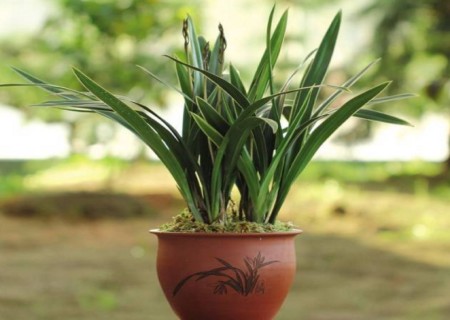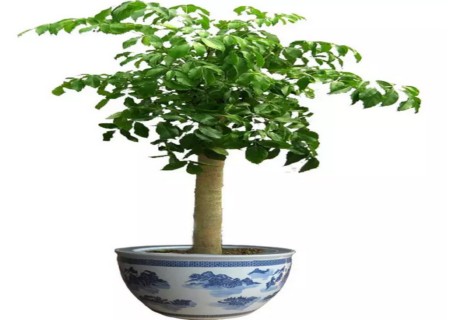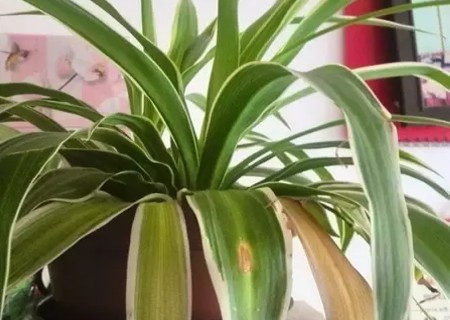What if the leaves of potted magnolia turn yellow?
Mo Lan, also known as Orchid, originated in China, Vietnam and Myanmar. Spring Festival, when the Chinese orchid, Qingyan with Jiao, fragrance overflowing, full of spring. There is a long history of cultivation in China, and in recent years, new varieties of Cymbidium have been in the market. Ink orchid, rich aroma, changeable color, beautiful flower color, unique leaf shape, many friends can not resist its temptation and charm.
Cymbidium is a very popular potted plant, which not only has ornamental value, but also can purify the environment, but many people often have yellowing leaves when they are conserved. In fact, this is caused by improper maintenance and management. The following editor makes a detailed analysis of the causes and solutions of the yellowing of the leaves of Cymbidium.

1. Environmental pollution
The leaves of the orchid are long and thin, with many stomata and a large contact surface with the air. If some families happen to put them opposite the smoking machine and the smoke window, then the leaves will be seriously yellow.
Solution: Melan especially needs fresh air and pollution-free growing environment. Mo Lan Garden should avoid factories and workshops that emit thick smoke and produce a lot of dust nearby. Family cultivation should be as far away from smoke windows, range hood and air conditioner outside tuyere as far as possible.
2. Lack of light
Excessive light can easily cause sunburn of leaves. Excessive shading or long-term indoor exposure will affect the photosynthesis of orchids, resulting in yellowing leaves, poor growth and not easy to blossom.
Solution: proper exposure to more sunlight, especially the morning light before 9 am is very beneficial to the growth and flowering of orchids. There should be 40%, 50% shade in winter and spring, and 80%, 90% shade in summer and autumn.
3. The temperature is too low
If it is winter, the leaves of Mulan turn yellow, mostly because the temperature is too low and frozen, especially at the temperature below zero.
Solution: therefore, we should pay attention to the anti-freezing of Mulan, do not put it outdoors in winter. The suitable temperature for the growth of Cymbidium is 18 ℃ ~ 28 ℃. If the temperature is more than 30 ℃ in summer and the average temperature in winter is lower than 10 ℃, it will grow slowly or enter the dormancy period.
4. Excessive watering
When watering Mulan, we must be careful not to water too much at once, and the water can not be absorbed immediately in the soil, which can easily lead to root rot, rotten roots, slowly yellowing leaves and even the death of the whole plant. And the watering method should also be appropriate. Most of the time, when we water the plants, we are always used to pouring water from the plant's head, which can easily make the water flow into the new leaf buds, causing the leaves to yellowing or even rotting roots.
Solution: summer and autumn before and after sunset, the leaves should be dry before nightfall. In winter and spring, it is best to water before and after sunrise, and spray to increase air humidity to benefit the growth of ink orchid. When the surface of the matrix is dry, it needs to be watered as soon as possible, not too dry for too long. And the watering method should be correct, watering along the edge of the basin is better.
5. Sprinkle too much fertilizer
Cymbidium is not too dependent on nutritious fertilizers, if long-term frequent fertilization, will lead to excess nutrition, over time, will also cause leaves yellowing.
The right way: therefore, fertilizer sprinkling should be moderate, not too much. Fertilization is applied once a week in the growing season, and the growth of Magnolia is slow in autumn and winter, so it should be applied less every 20 days, and a small amount of water should be sprayed after fertilization to prevent the fertilizer liquid from contaminating the leaves. Fertilization must be carried out in the evening on a sunny day, and there is a risk of rotting roots on cloudy days.
6. Diseases and insect pests
Due to poor ventilation and high humidity, Cymbidium is prone to the harm of ink spot and mycosis. Pay attention to timely prevention of diseases. If the orchid is sick, it will also cause the leaves to turn yellow, and there are more diseases in the orchid.
Solution: remove diseased plants, strengthen ventilation and reduce humidity; control with 65% Dysen zinc powder 600 times or 50% carbendazim 800 times. Once every half month, three times in a row. The harm of scale insects often occurs when the humidity is high and the ventilation is poor. Scale insects, commonly known as blue lice, are difficult to eradicate. It can be controlled with 500-800 times of 20% omethoate EC.
Note:
1. Avoid the bright light
Ink orchid can be placed in the east, south, west balcony for management, in which the east, west balcony cultivation effect is better, in the south balcony should avoid the sun is too strong. Because the height of Mo Lan is moderate, you can put it anywhere.
2. Turn the basin
There is also a limit to the ornamental value of the orchid. The best viewing time is 5-7 years after planting. Without turning the pot, the ornamental value will decrease after 2 years, so it is necessary to turn the pot and change the soil in time.
Time: 2019-05-31 Click:
- Prev

What about the old leaves of the potted happiness tree?
The happiness tree is beautiful in shape, elegant in posture and green in leaves. It is a common indoor potted plant, which can be made into small and medium-sized potted plants and placed indoors and balconies. It is a good furniture embellishment and green plant. Its exuberant vitality always brings auspicious and happy implications for people. But recently, many friends have reacted.
- Next

What if the leaves and tips of Phnom Penh are yellow?
The leaves of Phnom Penh Cymbidium are wide linear and light green, the edges of the leaves are golden, and the leaves are slender and soft, so they are good foliage plants. However, if the leaves of Phnom Penh turn yellow, it will greatly reduce its ornamental. What about the yellow leaves of Phnom Penh? How to deal with it?
Related
- Fuxing push coffee new agricultural production and marketing class: lack of small-scale processing plants
- Jujube rice field leisure farm deep ploughing Yilan for five years to create a space for organic food and play
- Nongyu Farm-A trial of organic papaya for brave women with advanced technology
- Four points for attention in the prevention and control of diseases and insect pests of edible fungi
- How to add nutrient solution to Edible Fungi
- Is there any good way to control edible fungus mites?
- Open Inoculation Technology of Edible Fungi
- Is there any clever way to use fertilizer for edible fungus in winter?
- What agents are used to kill the pathogens of edible fungi in the mushroom shed?
- Rapid drying of Edible Fungi

